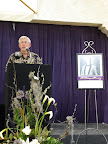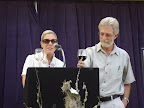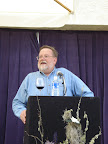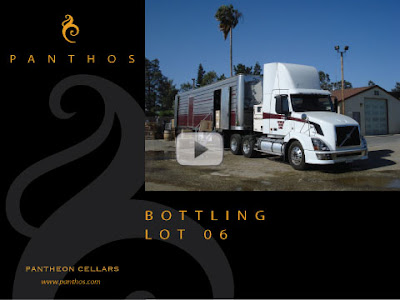I was very fortunate as a former employee of Woodbridge to attend yesterday’s celebration of the life of Robert G. Mondavi at Woodbridge Winery.
It had been very clear to me the tremendous role Mondavi played in putting Napa Valley on the world wine map, as well as his technical winemaking innovations, such as stainless steel tanks.
What I hadn’t understood was the pivotal role he played in boosting wine quality in Lodi. It is possible that without him, farmers would still be growing thousands of acres of Rubired for insipid, low-end wines.

One of a handful of speakers at the event, John Ledbetter of vineyard management company Vino Farms, said, “He took generic Bob Red and Bob White and changed over to varietals.”
Brad Alderson, former GM and founding winemaker of Woodbridge, added that Mondavi and his team, working with local growers, took Lodi, “From bankruptcy and table grapes, to an emerging winemaking region. It was his cheerleading and needling phone calls that did it.”

Marci Mondavi Borger, with brother Tim at her side, said, “He celebrated life from the tips of his toes to the top of his head. He had this area in his veins and carried it his whole life. He had a favorite fight song from Lodi High that he used to sing to us to get us going. Something about, ‘We are the flaming hoards.’”
“When I think of Robert, I think of passion, which was infectious,” said Alderson. “If you didn’t catch it the first time, he’d keep repeating, ‘It’s all about making great wines. We have the soil, climate and talent.’ If I heard that speech once, I heard it a thousand times. Continuous improvement was in his DNA long before it became a fad with corporate America. ‘Do it once and do it better the next time.’”
“He was always challenging others to do better.” recalled Ledbetter. “He always made you feel you were an integral part of the process by communicating his vision to you. One day in a vineyard at Peltier and Jack Tone Roads, he asked point-blank, ‘What could we do to elevate our wines to their rightful position in the wine world?’”
Rather than an enjoyable vacation, a 24-day trip to France with Robert and Margrit was more like, “a sort of Navy Seals training camp,” according to Alderson.

"Traveling between stops, when [either Robert or Margrit] was sleeping, the other peppered us with questions about the wineries and Michelin restaurants we’d visited. Questions like, ‘Did they have flowers in the hall?’ Everybody was part of the team. It was a huge collective family.”
Alderson’s favorite time with Mondavi was the annual blessing of the grapes (which is scheduled for August 7 this year). “This wasn’t a PR event. If the press didn’t show up, we didn’t care, because it meant something to us. It took the support of our Creator to make great wine. We needed to acknowledge it once a year. If Robert were here, he’d say, ‘We’ve done well, but we can do better.’”
Speakers also included Woodbridge Visitor Center Manager Larry Pilmaier – excellent as M.C. – Lodi Mayor Joanne Mounce and Richard Sands, Chairman of Constellation. Michael Mondavi was not in attendance.
The celebration concluded with 24-year-old “performance painter”
David Garibaldi’s hopping, dancing, and almost bull-fighting 15-minute portraiture of Mondavi set to a few classic songs, including Mondavi’s favorite “Volare” by Dean Martin. The performance was as awesome as Cirque du Soleil:
 With mixed feelings, I watched the last two bins of Silvaspoons Vineyards Kerry Lane Block Mourvèdre drive off to the winery, signaling the end of our harvest.
With mixed feelings, I watched the last two bins of Silvaspoons Vineyards Kerry Lane Block Mourvèdre drive off to the winery, signaling the end of our harvest. The main job for Nick and I has been to jump onto the bins on the back of a narrow tractor and frantically pull out leaves from the gathered grapes while moving, trying not to fall off. We just don’t want those undesirable “green,” herbal flavors.
The main job for Nick and I has been to jump onto the bins on the back of a narrow tractor and frantically pull out leaves from the gathered grapes while moving, trying not to fall off. We just don’t want those undesirable “green,” herbal flavors. No matter than the cameras became sticky with grape sugars, such that the zoom on one camera is jammed. I didn’t mind getting whipped in the face by long vines as the tractor drove through the rows, or having my glasses glaze over like a doughnut, making it hard to see.
No matter than the cameras became sticky with grape sugars, such that the zoom on one camera is jammed. I didn’t mind getting whipped in the face by long vines as the tractor drove through the rows, or having my glasses glaze over like a doughnut, making it hard to see.




































